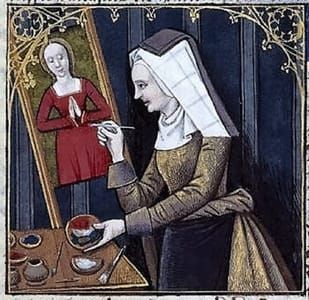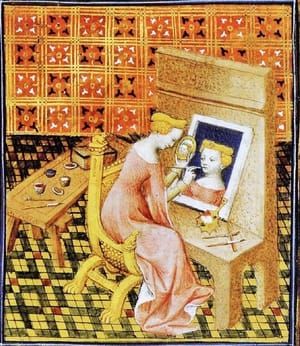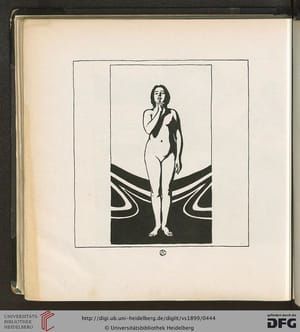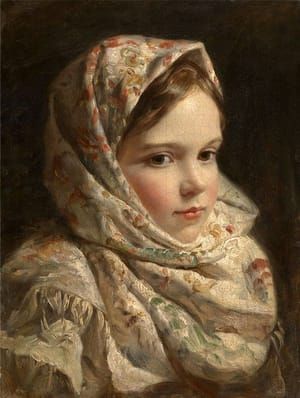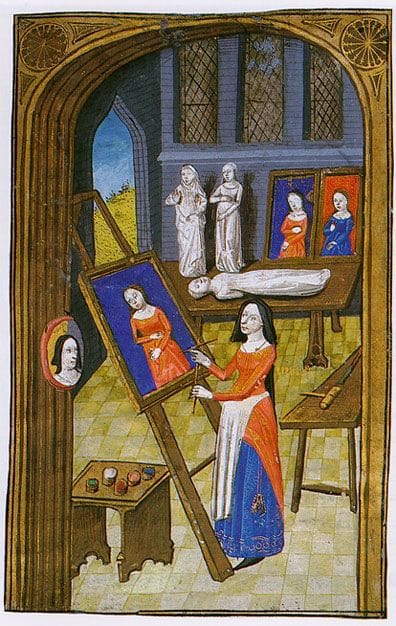

Painter in Her Atelier, 1470
Unknown
This miniature is from an illuminated book entitled "Des cléres et nobles femmes." De mulieribus claris (Of Famous Women) was written by Giovanni Boccaccio and was first published in 1374. It became a runaway "bestseller" of its age and was copied and re-copied hundreds of times. This particular edition (MS. 33, f. 37v) is French and part of the Spencer Collection in the New York Public Library.
The painting shows the artist Marcia at work in her atelier. It is usually described as Marcia painting a self-portrait, as you can see the small mirror affixed to the arch next to the easel. The artist has set the painting in his or her "contemporary" 15th century France, but Marcia was actually an artist from ancient Roman times.
From the wikipedia entry:
Iaia of Cyzicus ("Marcia") was a Roman painter, alive during the time of Marcus Terentius Varro (116-27 BC). She was a famous painter and ivory engraver. Most of her paintings are said to be of women. Among pictures ascribed to her was a large panel, in Naples, picture of an old woman and a self-portrait. She was said to have worked faster and painted better than her male competitors, Sopolis and Dionysius, which enabled her to earn more than them.
[http://womenintheactofpainting.blogspot.nl/2012/10/]
Marcia remained unmarried all her life.
One of the six female artists of antiquity mentioned in Pliny the Elder's Natural History (XL.147-148) in A.D. 77: Timarete, Irene, Calypso, Aristarete, Iaia, Olympias. They are mentioned later in Boccaccio's De mulieribus claris.
[https://en.wikipedia.org/wiki/Iaia]
This site dates this about 1470.
[https://bjws.blogspot.nl/2016/04/women-artists-from-1400s-illuminated.html]
Uploaded on Dec 28, 2017 by Suzan Hamer
Unknown
artistArthur
Wait what?

